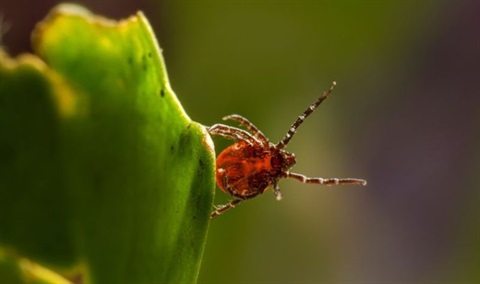Ticks and their removal
Published on 12 October 2023

About ticks
The paralysis tick is the most common tick in Lake Macquarie. It is often referred to as a grass tick, seed tick or bush tick depending on its stage of development. Ticks are most active during periods of high humidity, especially after rain.
Paralysis ticks are not particularly mobile and rely on passing people or animals for a blood meal. They will crawl up the stems of grasses or along branches and ‘perch’, ready to latch on to passing animals or people.
Reducing the likelihood of tick bites
- Be prepared when working in known tick-infested areas. Be aware of your surroundings.
- Wear a tucked in, long-sleeved shirt with collar up, long pants tucked into socks and a widebrimmed hat.
- Ticks often attach at the feet first and move upwards, attaching in warm moist areas on the body. Your first line of defence is your shoes and socks.
- If you are working in a known tick-infested area consider wearing Permethrin treated clothing. Permethrin will kill or weaken ticks upon contact.
- Spray hats and clothing with a DEET product every three hours. A DEET-based insect repellent can also be applied to any exposed skin such as wrists, hands and neck. Landcare groups can request insect repellent.
When you get home
Always leave your shoes outside, and check them for ticks, remembering that ticks can be as small as a poppy seed and a challenge to see.
Ticks often attach to clothing, so take your clothes off and put them in a dryer at high heat for at least 15-20 minutes. The high temperature will kill the ticks and prepare the clothes for washing.
Check yourself thoroughly. Check all areas of the body - ticks particularly like:
- Hairlines
- Inside and behind the ears
- Back of the neck
- Inside the belly button
- The groin
- Behind the knees
- Between your toes
- Armpits
- Around the waistline
- Under and around waistbands
Tick removal
The Tick Off product by Medi Freeze is the recommended method for tick removal and can be requested by Landcare groups. It must be stored below 25 degrees and a storage case to assist in this requirement can also be requested. Detailed instructions for use and storage will be provided.
A common reaction after a tick bite is an itchy red lump that may persist for a week or more. A ‘bulls-eye’ rash over the bite or swelling over a large area may indicate an abnormal reaction, which should be seen to by a medical professional.
Talk to us
If you or your Landcare group feel you have exposure risk, see high numbers of ticks, are getting tick bites or seeing ticks on skin or clothing before they attach, or are otherwise concerned please contact us to discuss your situation and what assistance we may be able to provide.